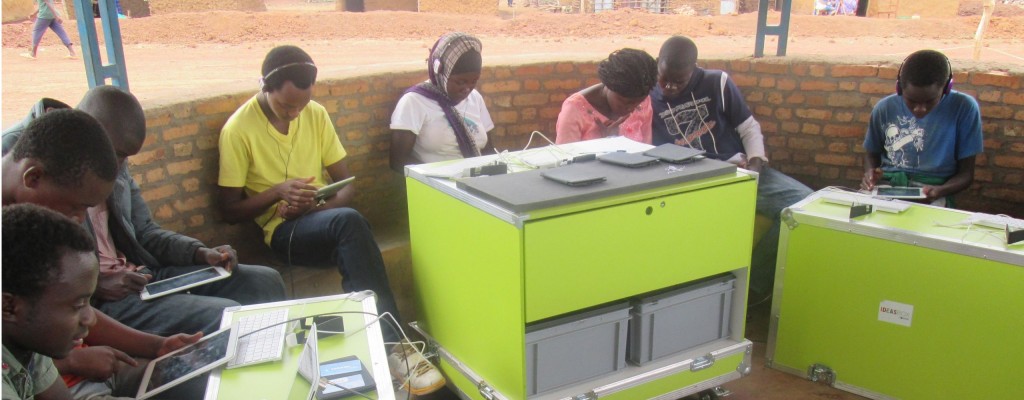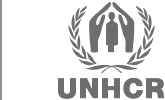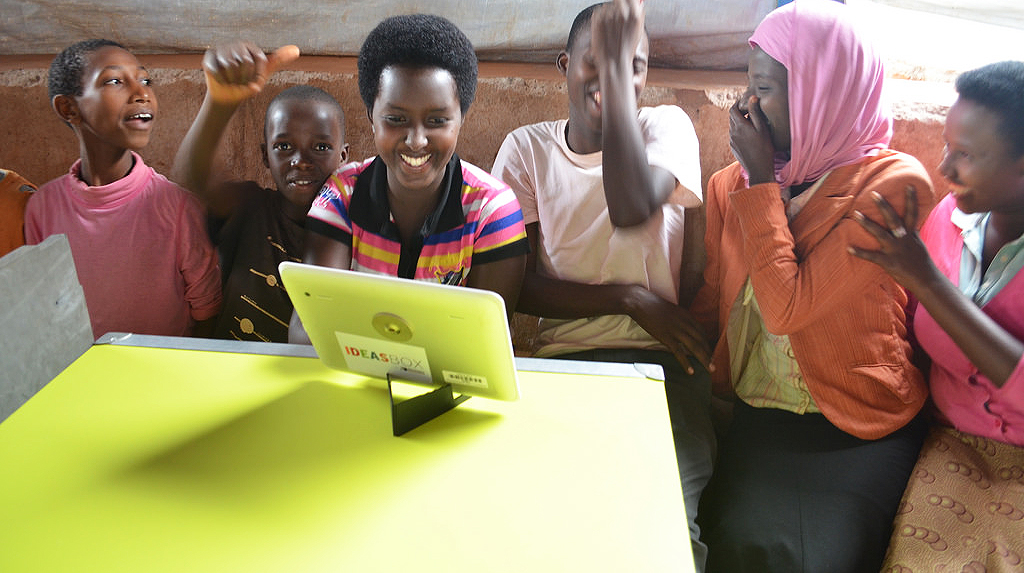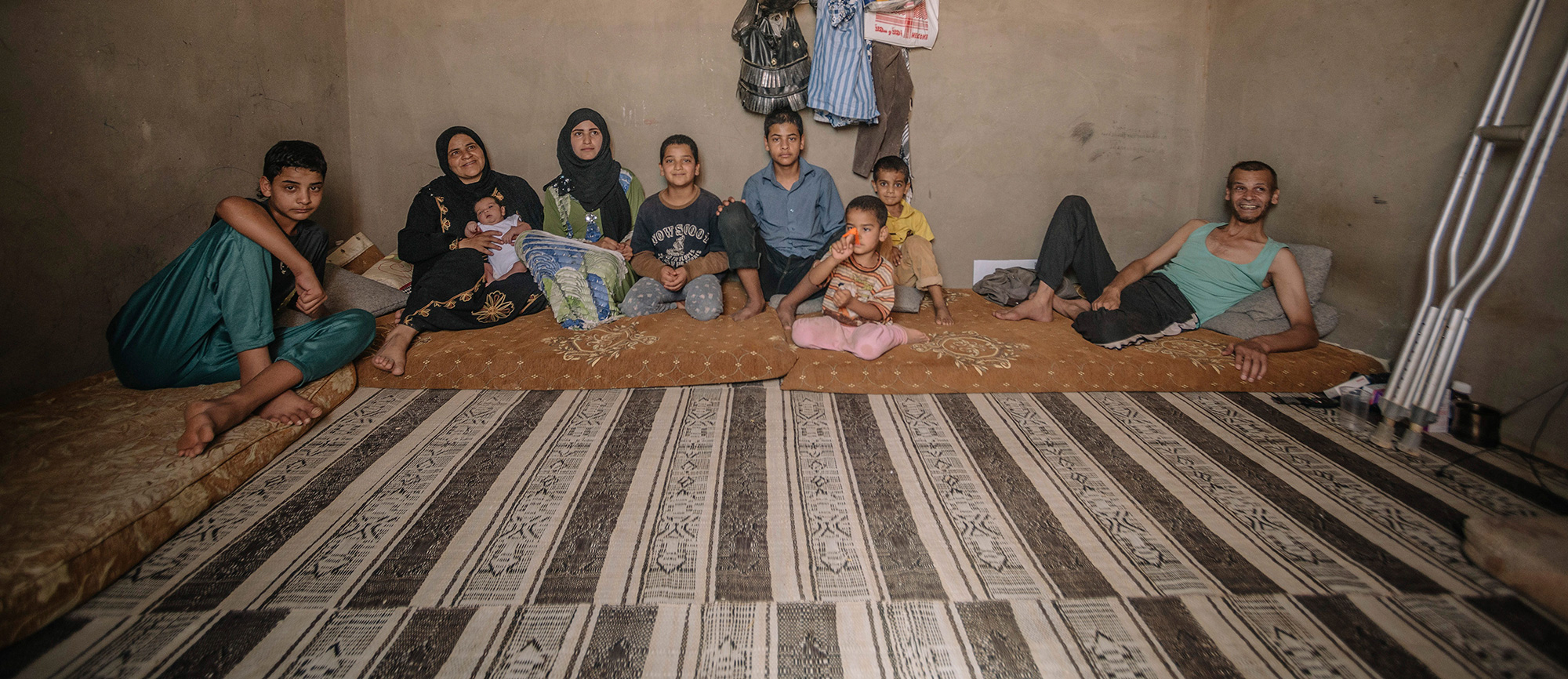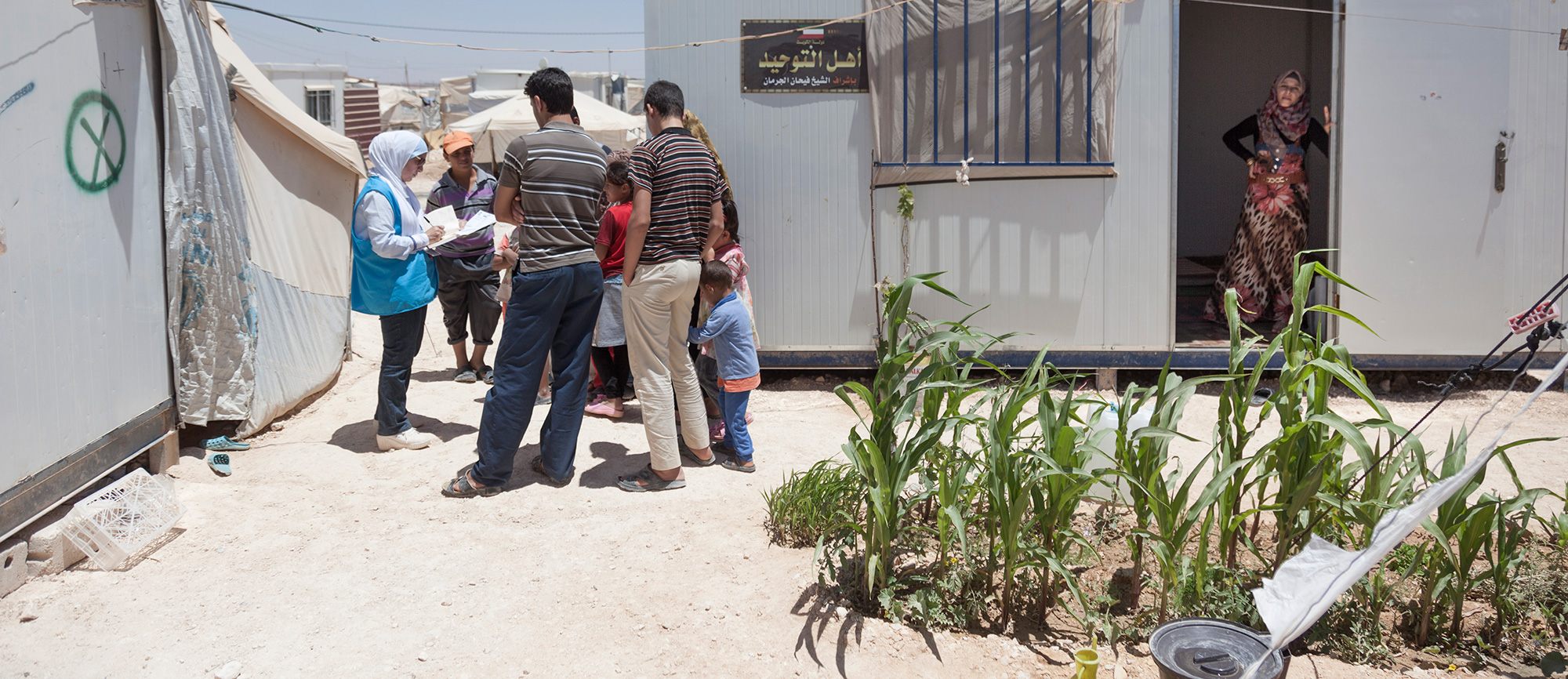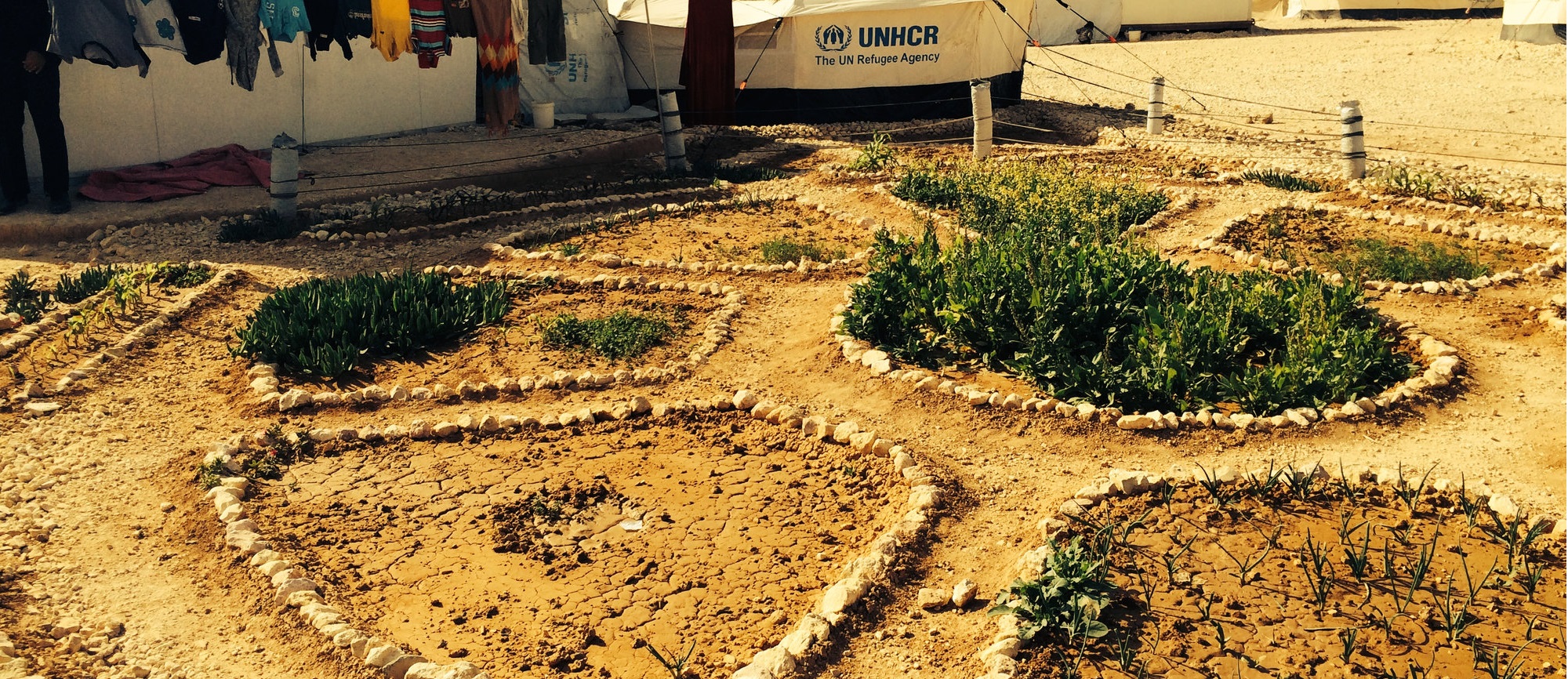1. Define challenges
Creating safe spaces to connect and learn
Among the most pressing needs for refugees are food and shelter, health care and clothing. Once such immediate priorities are met, though, refugees also need opportunities to forge social ties, rebuild an informed civil society and acquire skills needed to earn a livelihood.
They need spaces to explore their own — and others’ — cultural heritage and build on it. Safe spaces to connect, learn and reside after school.
UNHCR has been meeting these diverse needs for years in a variety of ways and with a host of partners. Schools and community centers have been built, meetings facilitated, curricula developed, learning kits distributed, libraries stocked, radio programs broadcast, newspapers launched and documentaries filmed, among many other things.
More often than not, investments are made in one area or another while the search continues for more holistic and cost-effective solutions. Take community libraries, for instance, which have proven to be a valuable resource for refugees around the world: Building brick-and-mortar facilities and stocking them with books can take a lot of time and effort, and it tends to happen only in the most protracted refugee centers.
The expanding use of e-books over the past few years has helped UNHCR and other humanitarian actors facilitate access to new materials. It’s also raised the question: Just how can these dynamic devices be integrated into similarly dynamic spaces for refugees to gather in and interact?
The ideal space would be rapidly deployable yet flexible enough to adapt to local circumstances. It would provide access to educational and cultural materials that help people grow as individuals and as a community.

2. Identify solutions
Connecting creators and humanitarian experts
After an earthquake devastated Haiti in January 2010, Libraries Without Borders set up community libraries, deployed bookmobiles and distributed library kits to internally displaced people. The group quickly recognized that the kits, distributed with the help of UNICEF as part of a program called The Story Box — or La Boîte à Histoires — was about more than books: It was creating spaces for people to gather, communicate and learn.
The team began to envision an even more versatile, readily deployable tool to meet the multi-faceted needs of refugee and vulnerable populations. The idea was borne for the Ideas Box, a portable multimedia center providing a comprehensive set of tools and programs to access information, education and culture.
UNHCR’s unique operational insights and access made it a natural choice for a partner. The agency agreed to shepherd the project, connecting the Ideas Box creators to the field and helping with prototype design and testing.
The Alexander Soros Foundation, Pierre Bellon Association and Starck Network stepped up as founding partners, and Philippe Starck, the renowned French designer, agreed to design the box — a particular challenge given its durability and functional needs.
In October 2013, Libraries Without Borders organized a symposium in Paris, France, on the urgency of learning. During the event at the Maison de L’Amerique Latine, former UNHCR Deputy High Commissioner T. Alexander Aleinikoff, and others highlighted the importance of giving people caught in emergency situation access to information and communications tools.
A petition circulated calling on the international community to take this need seriously and program accordingly.
The team behind the Ideas Box presented its design and solicited feedback. A month later, staff members visited the Musasa and Kavumu camps in Burundi to get a sense of the environment and the major social and organizational challenges there, and to prepare the deployment of the first Ideas Box kits.
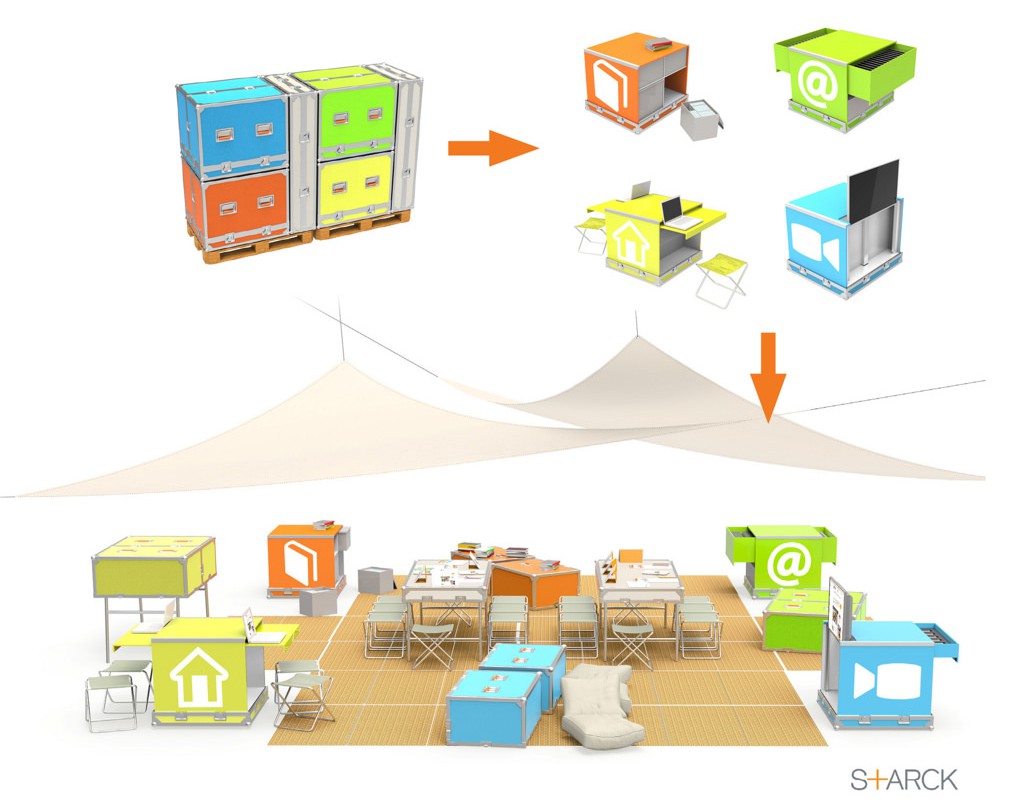
Ideas Box is a media center kit that can be set up in less than 20 minutes.
3. Test solutions
Bringing together product innovation and local needs
The first two Ideas Box kits were deployed in February 2014 in Burundi’s Kavumu and Musasa camps, which host around 4,000 Congolese refugees.
Each kit included several boxes that could be turned into tables, benches and other furniture. The boxes contained a variety of things chosen in consultation with refugees and humanitarian staff: e-readers and books, tablets and laptops, cameras and a video projector, board and video games, arts and crafts materials, a generator and Internet connection.
It’s not that these tools hadn’t been used before in a refugee setting — they had! But the Ideas Box delivered them all together in a customizable and readily deployable format. It married physical product innovation with a strong focus on high-quality, culturally appropriate content that could be tailored to local needs and rolled out in various languages.
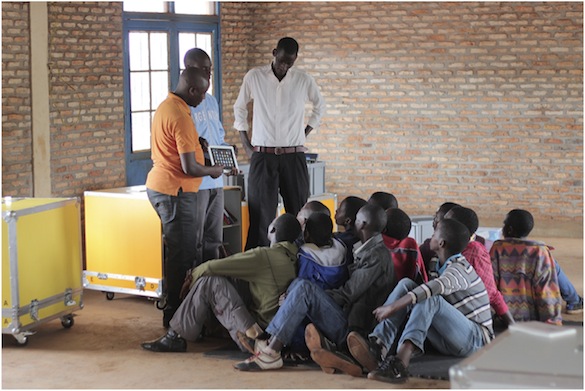
Learning how to use the Ideas Box.
Initial results were promising: The first two kits drew 24,000 visits in three months — more than 400 unique visits for each box per day, on average. The number and diversity of users increased gradually, as did community ownership of the kits. In its midterm report, released in September 2014, Libraries Without Borders noted “strong complementarity to many of the ongoing programs in the camps.”
The Ideas Box can serve as a catalyst and community-building tool within refugee settings, the group concluded. The kits enable teachers to improve the overall quality of their lessons, and they create a safe space where children can and want to go after school.
The boxes appeared to weather intense use in harsh conditions, too; the case and furniture was durable and easy to clean. No major equipment failures were recorded.
4. Refine solutions
Gathering feedback from refugees
Burundi field staff have been monitoring the community’s response to the Ideas Box since the first kits were deployed. Its daily and weekly reports have been used — together with additional feedback from refugees and humanitarian experts — to tweak the kits and expand content.
Coming up with a set of basic yet highly customizable — and constantly updated — content is no small feat. Initially, the Ideas Box relied heavily on the use of massive open online courses and digital contents provided by the Khan Academy and Wikipedia. But as new needs and opportunities to make a difference are identified, new content will need to be introduced.
As new content is added to the mix, the Ideas Box may become more useful in emergency situations, too: In such scenarios, a standard kit may be dispatched almost instantaneously and content could be updated continuously, with each kit becoming part of an interactive network.
More research has been underway on the Ideas Box’s impact on academic performance, community resilience and the daily lives of refugees. In the fall of 2014, for instance, a quantitative study compared the academic performance of primary and secondary students in the traditional school system with those using the Ideas Box. A mental health expert continues to monitor a limited number of Ideas Box users to get a better sense of their stress levels and psychological development on the one hand and their propensity for intra- and inter-community dialogue on the other hand.
And an ongoing study that combines qualitative and quantitative elements will attempt to gauge the Ideas Box’s contribution — particularly through its Internet connection — in terms of creating or re-activating networks and external relations in the camp, breaking isolation and developing economic life in a refugee camp. It will refer to the usage data collected in real-time by the devices as well as on the development of thematic discussions to consider both the intensity and quality of information flows exchanged and the new economic activities created.
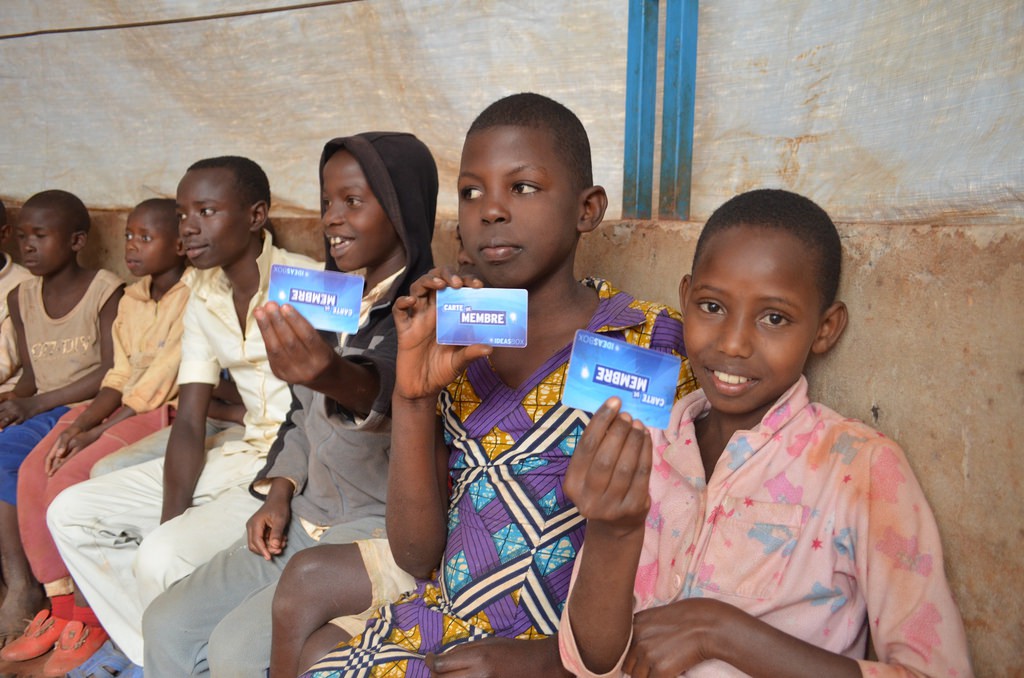
Young refugees hold up their library cards, which they can use to open and access the resources inside the Ideas Box.
5. Scale solutions
A cost-effective design solution
Two more Ideas Box kits were sent to the African Great Lakes region in late 2014. Since then, more kits were deployed in Jordan, Lebanon and Ethiopia, and even in a non-refugee settings in Australia, the United States and France.
UNHCR and partner operations in the Republic of Congo, Democratic Republic of the Congo, Central African Republic, Liberia, Senegal and India have also expressed interest, as have the Bill & Melinda Gates Foundation, Oxfam, Ashoka and other institutions around the globe.
Meanwhile, the Ideas Box was selected in the WISE Accelerator and for the French governmental prize “La France s’engage,” and it was one of three finalists at the 2015 SXSW LAUNCHedu competition in Austin, Texas.
The biggest hurdle to the Ideas Box’s expanded use, however, remains costing. To date, kits are created on a one-by-one basis, which is relatively expensive and time-consuming.
To reduce production costs, Libraries Without Borders has begun to host a series of “Out of the Box” sessions with UNHCR and other partners in the humanitarian and ICT4D space. The workshops, which are supported by the Pierre Bellon Association are meant to improve the Ideas Box kits.
The design process is complicated by questions like these: What should the kit look like in circumstances where not all of the materials contained in a standard box are needed? And: Is the box even the right solution in a place that already has enough desks and chairs?
Once a cost-effective design is agreed on, the Ideas Box makers will consider mass-production. In the meantime, they want to explore ways to improve the deployment and maintenance of Ideas Box kits, too. After all, that process requires significant — and continuous — buy-in from refugee populations and their partner.
UNHCR plans to continue collaborating on the prototyping and testing of Ideas Box kits in Burundi and elsewhere, and connecting their makers with other actors in the humanitarian space.
